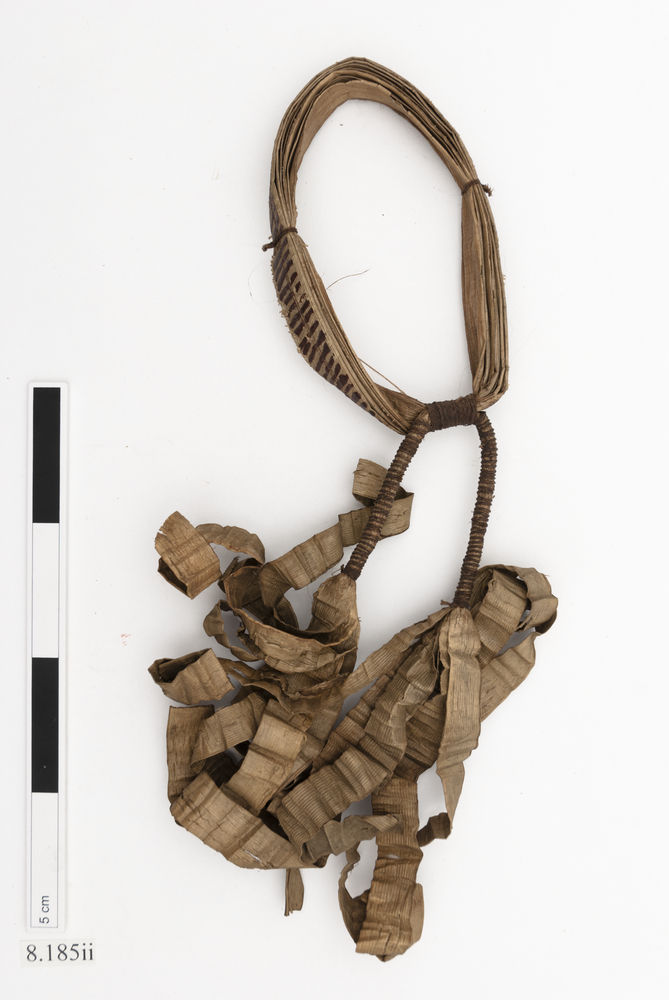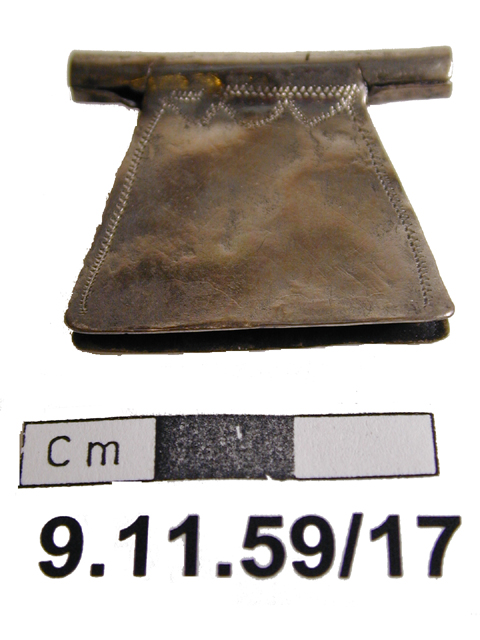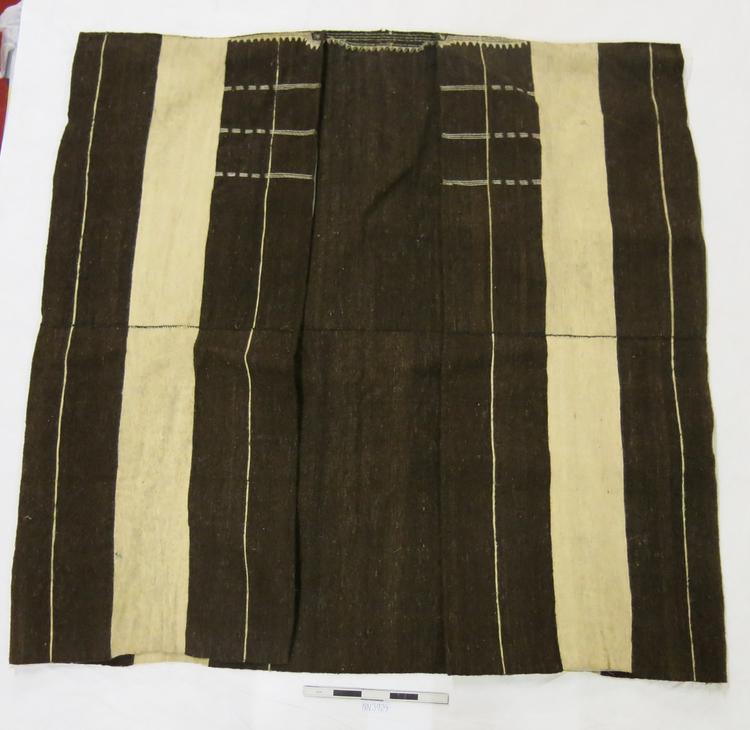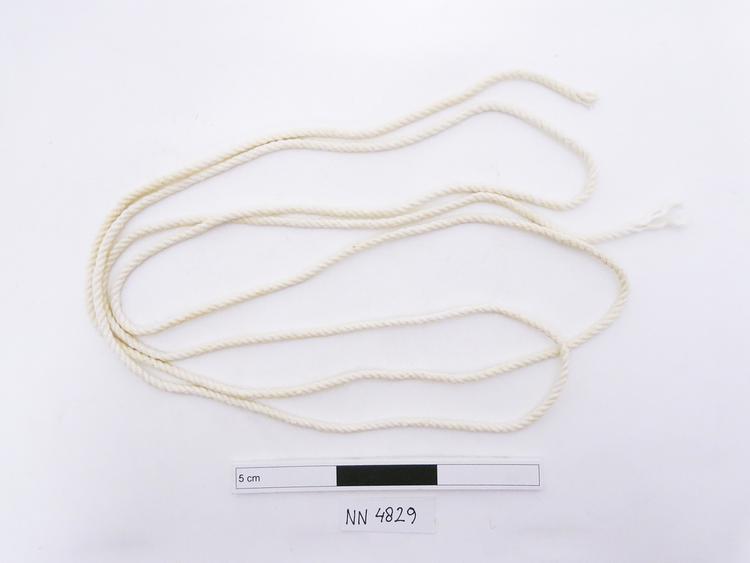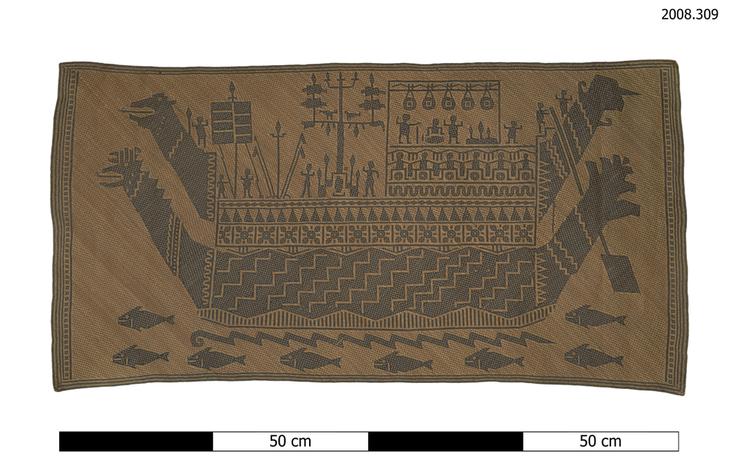
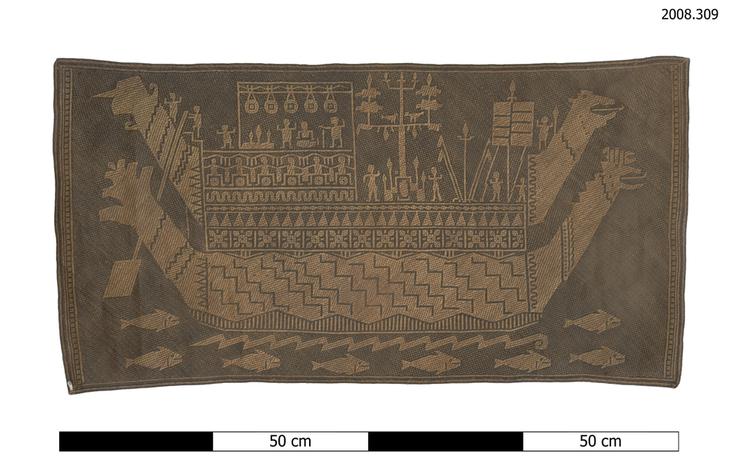
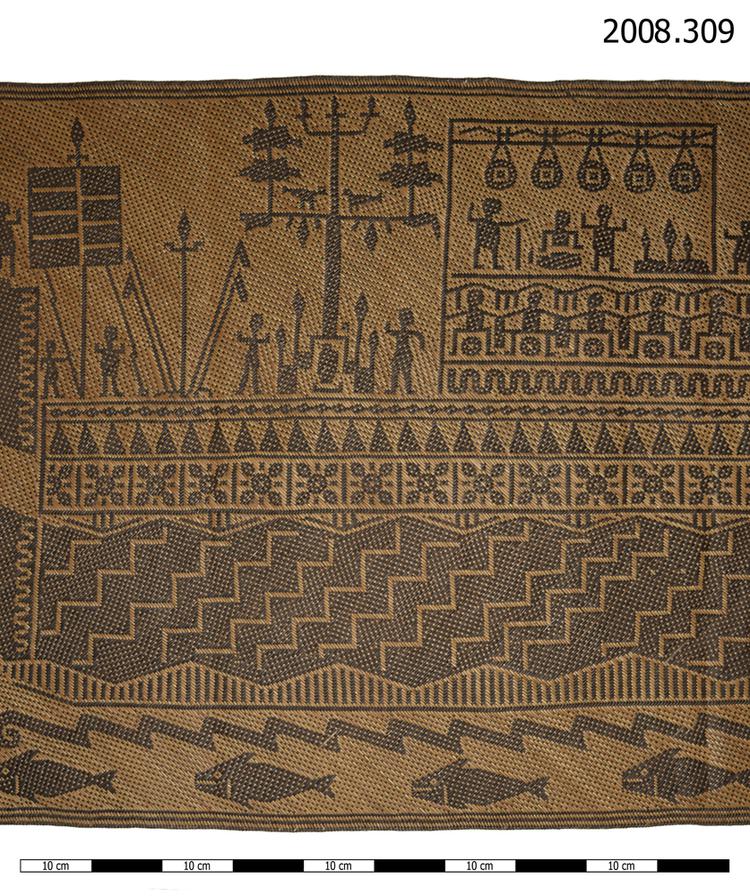
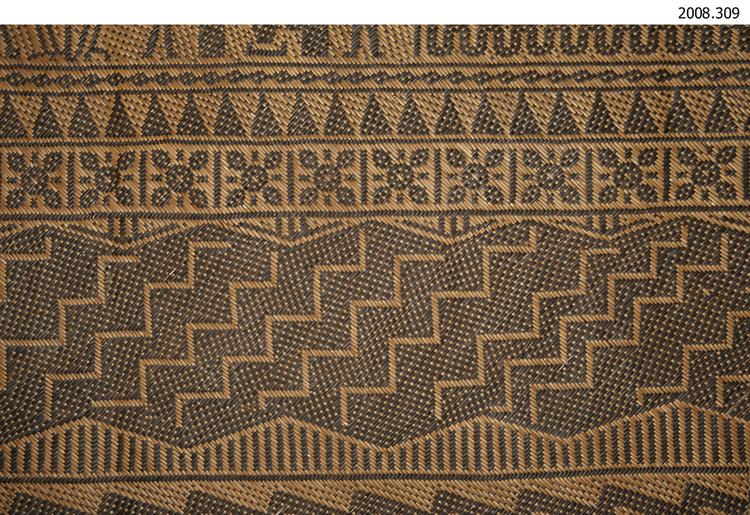
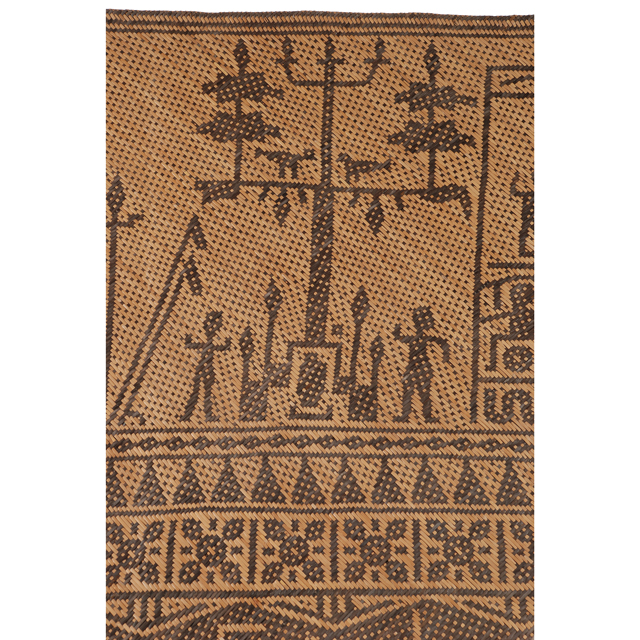
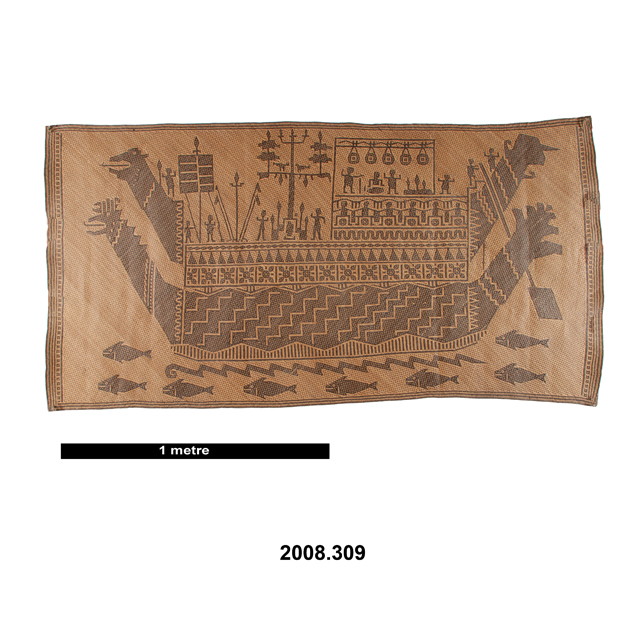
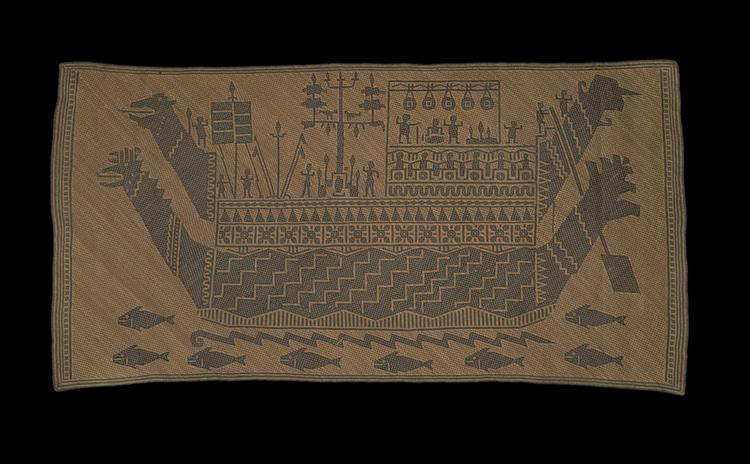
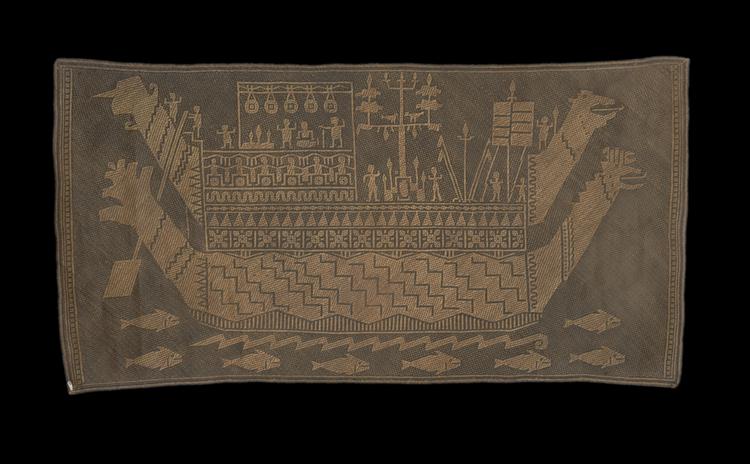
Woven rattan mat with a 'soul ship' design in black against the natural colour of the rattan. The ship has two prows in the form of animal or bird heads, each with a jutting tongue, and the stern is in the shape of two tails. Below the ship are eight fish motifs, below a zig zag line indicating the water. The side of the ship is decorated with diagonal zig zag lines; at the stern is a large rudder operated by a single figure above. On the left on the deck are figures with flags and a mast; to the right what seems to be a cabin containing six human figures and, above them, further figures and five hanging gongs.
This is a representation of the two soul ships. The one with naga head transports what we would call the "soul" animating the body, while the second one with 'sangkuwai' mythical bird head transports the souls of the physical body (soul of the chair, bones, and so on). When a person passes away, Ngaju believe that these two souls split and wait until the 'tiwah' in two different places before being sent to the Upperworld, where they reunite. The same two soul boats are depicted on the 'sengkarang' or 'penyangarang' sacrifical poles, while the 'sangkuwai' is also depicted on top of many 'pambak' mausoleums conserving the remains of the deceased. Are there any diagonal red or violet trips on the back of the mat? Because in this case it would have been used to lay down the body of the deceased during the primary burials. Junita and I reported on the Ngaju souls in detail in an article, the result of several years of field research focusing on a female class of traditional healers; it was published recently by the Borneo Research Council. Paolo Maiullari Curatore Museo delle Culture Villa Malpensata via Giuseppe Mazzini 5 6900 Lugano 27.9.2018



